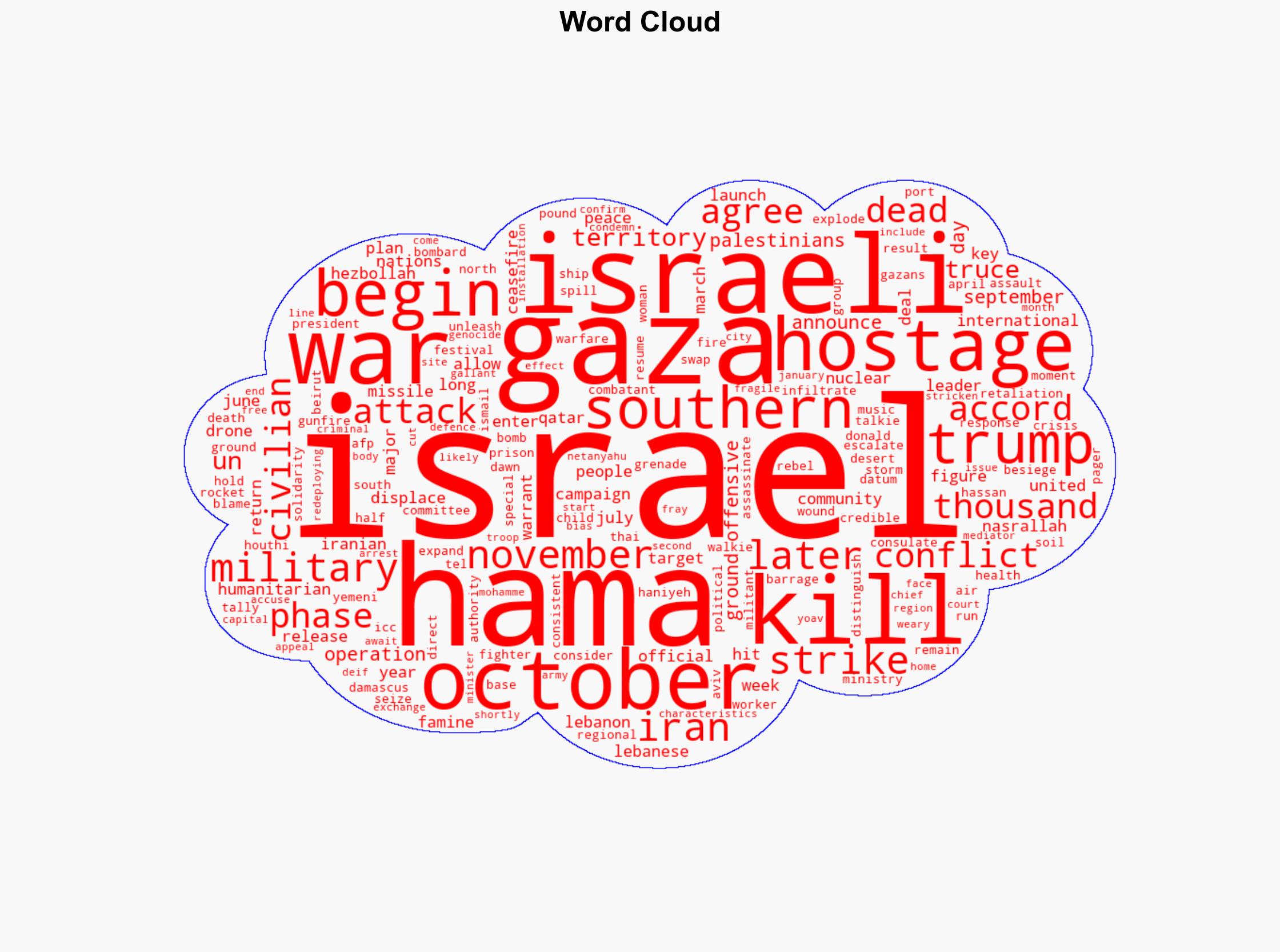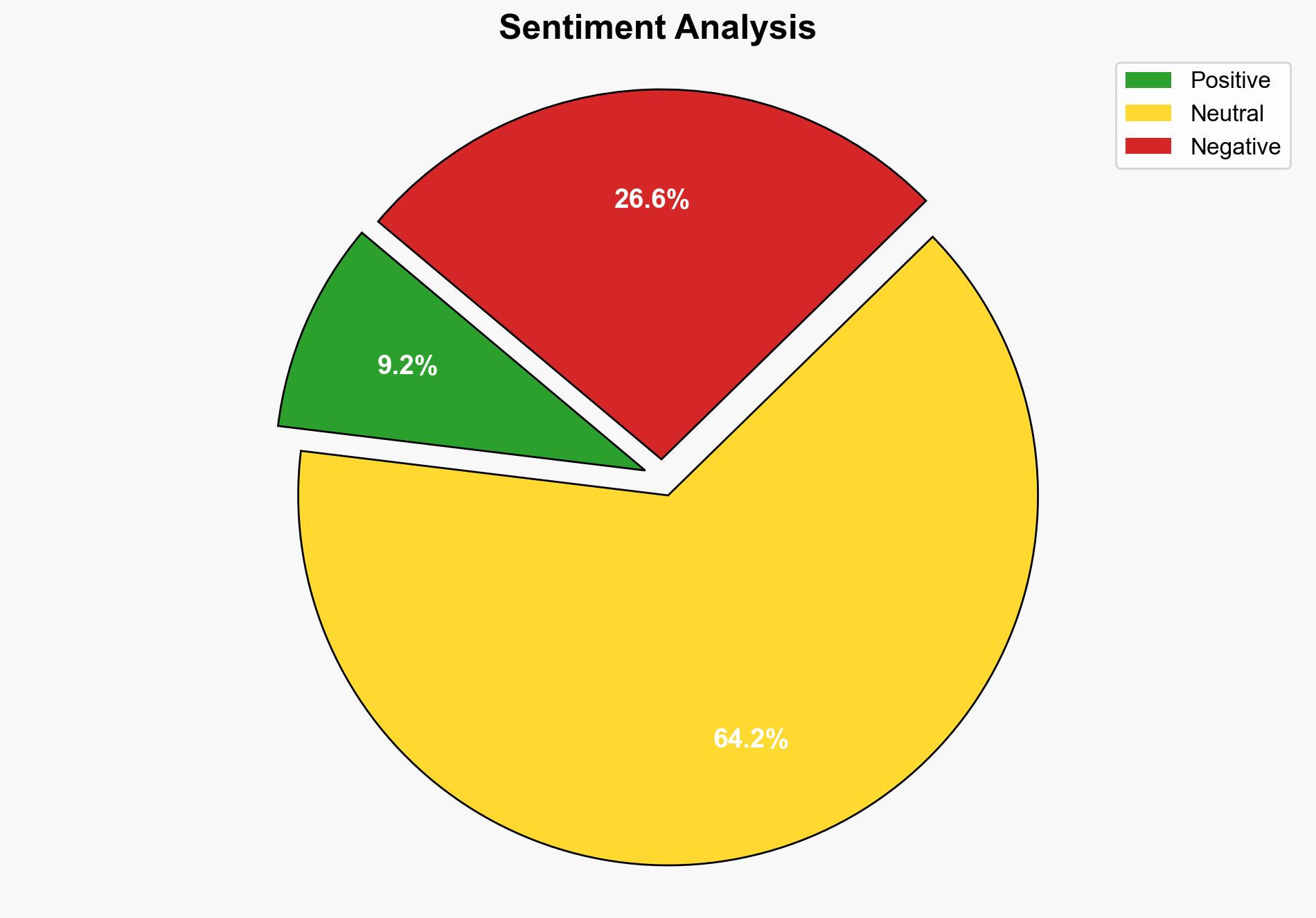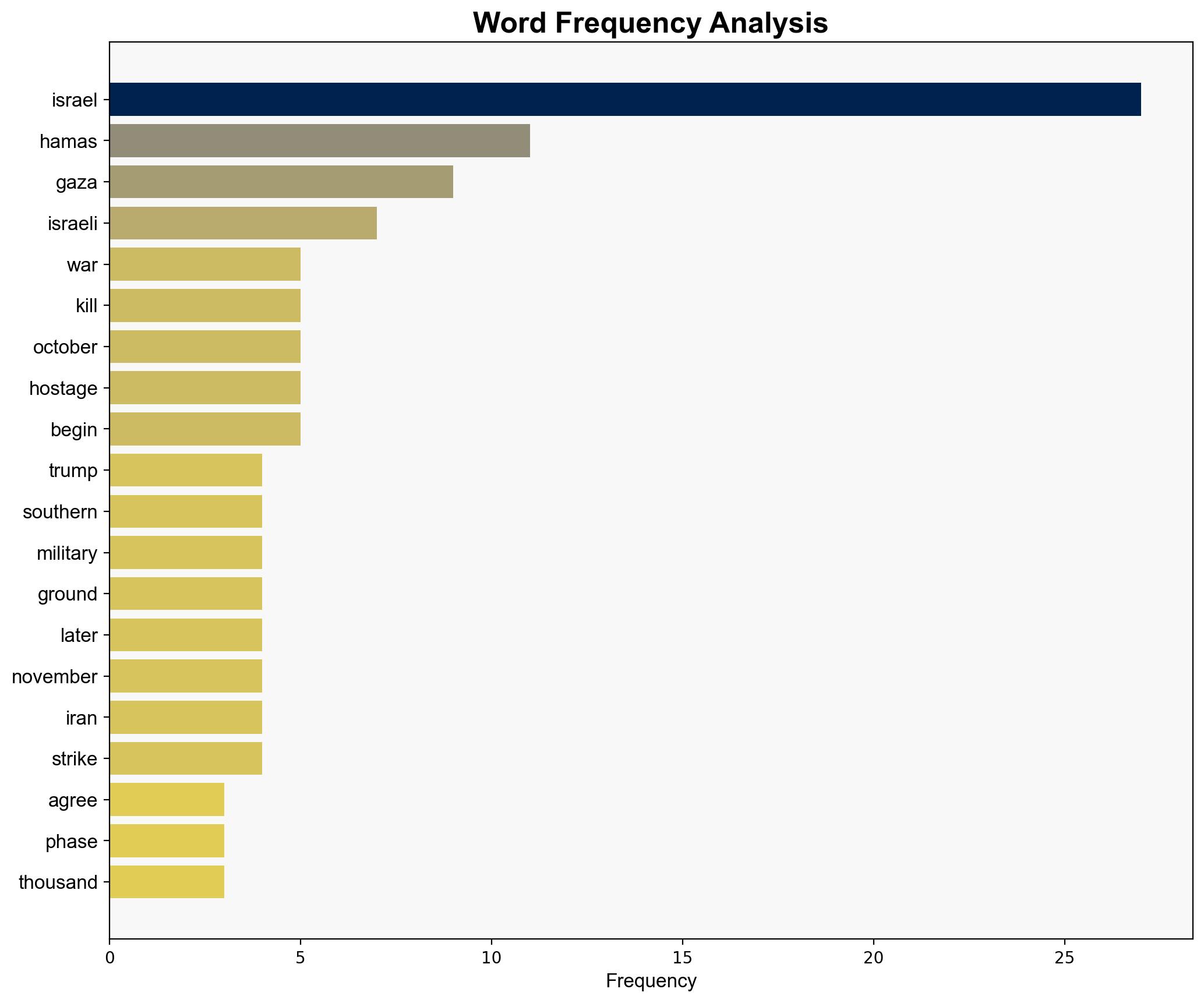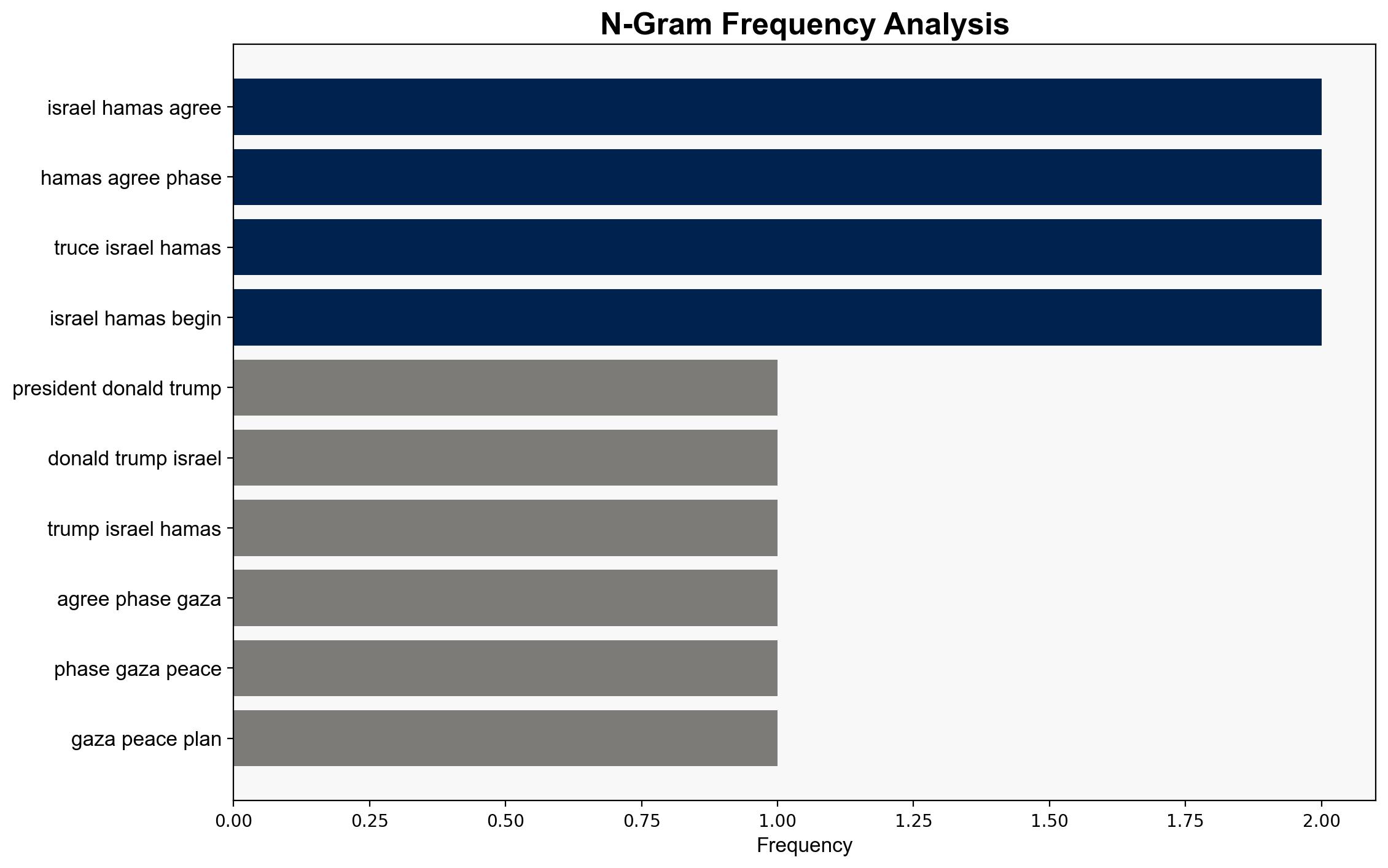Key moments in the Gaza war – RTE
Published on: 2025-10-09
Intelligence Report: Key moments in the Gaza war – RTE
1. BLUF (Bottom Line Up Front)
The most supported hypothesis is that the conflict between Israel and Hamas, with regional involvement from Iran and Hezbollah, is a protracted struggle with intermittent ceasefires that are unlikely to lead to lasting peace without significant international intervention. Confidence Level: Moderate. Recommended action includes diplomatic engagement to stabilize the region and prevent further escalation.
2. Competing Hypotheses
Hypothesis 1: The conflict is primarily driven by territorial and ideological disputes between Israel and Hamas, with external actors like Iran and Hezbollah exacerbating tensions to advance their regional influence. This hypothesis suggests that the conflict will continue with periodic escalations and ceasefires.
Hypothesis 2: The conflict is a proxy war where regional powers, particularly Iran, use Hamas and Hezbollah to challenge Israeli and Western influence, with the potential for broader regional destabilization. This hypothesis implies a higher risk of escalation involving multiple states.
Using ACH 2.0, Hypothesis 1 is better supported by the pattern of repeated ceasefires and the focus on localized territorial disputes, whereas Hypothesis 2 is less supported due to the lack of direct large-scale involvement by other states beyond support for proxies.
3. Key Assumptions and Red Flags
Assumptions include the belief that external actors are primarily interested in regional influence rather than direct confrontation. A red flag is the potential underestimation of Iran’s willingness to escalate through proxies. Inconsistent data includes varying casualty figures and the unclear status of key leaders.
4. Implications and Strategic Risks
The ongoing conflict poses risks of humanitarian crises, regional instability, and potential escalation into broader conflicts involving Iran and other regional powers. Economic impacts include disruptions to trade routes and increased military expenditures. Cyber threats and psychological impacts, such as radicalization, are also significant concerns.
5. Recommendations and Outlook
- Engage in multilateral diplomacy to broker a more sustainable ceasefire and address underlying grievances.
- Enhance intelligence-sharing and cybersecurity measures to counter potential cyber threats from regional actors.
- Scenario Projections:
- Best Case: A durable ceasefire with international guarantees and humanitarian aid leads to de-escalation.
- Worst Case: Full-scale regional conflict involving Iran and other states, with significant casualties and economic disruption.
- Most Likely: Continued cycles of conflict and ceasefire, with sporadic escalations and international diplomatic efforts.
6. Key Individuals and Entities
Donald Trump, Hassan Nasrallah, Ismail Haniyeh, Benjamin Netanyahu, Yoav Gallant, Mohamme Deif.
7. Thematic Tags
national security threats, cybersecurity, counter-terrorism, regional focus




